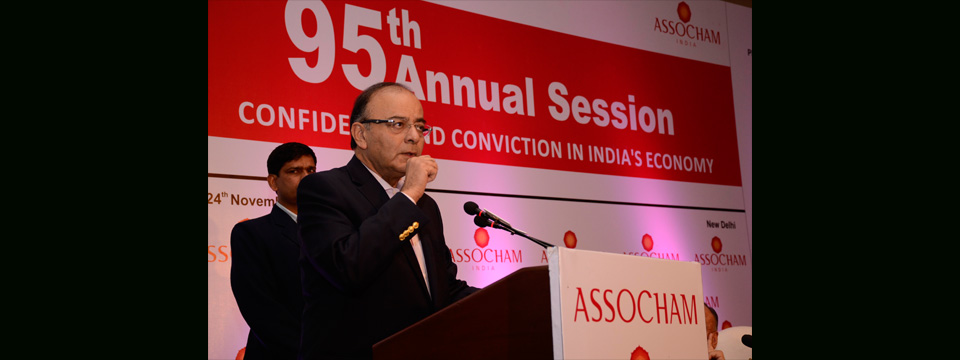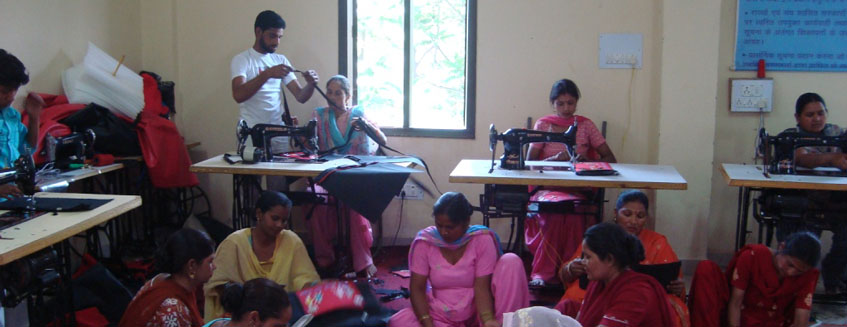The Government of India is going all out to ensure that the manufacturing sector pushes up its share of contribution in the GDP from the current 16 per cent to 25 per cent with the objective of creating more jobs. Additional Secretary and Development Commissioner, Ministry of Micro, Small and Medium Enterprises, Mr Surendra Nath Tripathi said that the government would be happy if the industry is able to generate the jobs and pays decent wages to its employees.
Speaking at the ‘4thNational Conference on Skill Development 2015, Linking Skills to Jobs’, organised by the CII, Tripathi mentioned how the government is laying stress on building the skills of people. He said: “Twenty-two ministries are skilling people, many states are doing it, therefore, I see that people can get the required skills from so many places.” He added that the government wants to create locally-available jobs.
Mr Tripathi added that the government has done the skill mapping of all the 654 districts and has uploaded all the information related to industries, manufacturing and skill profile on the web. Such a survey will help the government and the industry to be able to zero in on the specific requirements regarding skilling as well as setting up industries.
He also urged corporates to work on future technology and green initiatives with a view to creating green jobs in various sectors. “Can we go from jugaad to global excellence and finally reach levels of global excellence,” he asked.
Joint Secretary (UPA), A&C, Ministry of Housing and Urban Poverty Alleviation, Mr Brij Kumar Agarwal, said that fast changes are taking place in the skilling industry. Giving an example, he said that even though the government was providing skilling earlier also, the implementation game has changed. Mr Agarwal said that the government now wants formal results, wants training to be of good quality, wants it to be compliant and wants the trainees to get jobs. “For the government now, skilling has become an involved process,” Mr Agarwal said.
He added that besides providing training and skilling to people, the government is also urging the training institutes to lend loans to trainees who want to become entrepreneurs. “Through the Mudra scheme, we are giving the mandate to vendors to issue loans of up to Rs ten lakh,” Mr Agarwal said. He added that as banking companies may not be able to provide loans, the government is looking at Non-Banking Financial Companies also to provide loans to those starting as entrepreneurs.
On Day two of the CII Conference, there was a strong focus on developing entrepreneurship skills.Joint Secretary, Ministry of Skill Development and Entrepreneurship, MsJyotsna Sitling, said thatentrepreneurshipwill play a major role in states. “Different types of entrepreneurship, right from the bottom of the pyramid will have to be developed and the mentoring of entrepreneurs will have to be different from the traditional education system,” MsSitling said.
She also laid stress on the inclusion of the excluded people because the skills that they need are very different. MsSitling said that the industry has to make efforts to understand the role of skilling for the disadvantaged people.
CEO of the Chhattisgarh State Skill Development Authority (CSSDA), Dr Priyanka Shukla, highlighted the role that the state has played in understanding the entire skill development process. She said that Chhattisgarh has undertaken a big survey to find out the skill-gap situation in the state. “We took feedback from the private sector and went till the district level,” Dr Shukla said.
Stressing on the unique set of skills that her state needs, Dr Shukla said that people in Chhattisgarh want jobs close to their places. “People in Chhattisgarh get home sick if they are provided employment far from home. We need to develop local skills. Nobody else can do this for us,” she said. Dr Shukla also spoke about the livelihood college that the state has opened up which has become a big hit with the youth.
Talking on similar lines about regional differences, CEO, Additional Skill Acquisition Programme, Government of Kerala, Dr MT Reju, said that it is important to have a wide spectrum of training partners. He said that the Kerala government not only interacted with the State Skilling Councils but also industry bodies and business advisory councils. He stressed on the fact that the Sector Skilling Councils in the state will need to create more linkages with the industry and that skilling institutes will also have to provide for more generic skill roles.
The Chairman of the National Skill Development Agency and the National Skill Development Corporation, Mr S Ramadorai, said that though the country had ignored vocational space since Independence, it is still important to provide skilling even now. Mr Ramadorai focused on two aspects of skilling–linking people to markets and providing appropriate nature of jobs in rural and semi-rural areas. He said: “Every training that you provide should be seen as nation-building.”
VP, Sustainability, Lemon Tree Hotel Company, Ms Aradhana Lal highlighted the efforts of her company in bringing dignity to people with disabilities. The company has taken a voluntary step in inclusion, diversity and mainstreaming by providing skills and jobs to people with hearing and speech disabilities. Ms Lal said: “This policy has to be part of your main strategy, it cannot be part of CSR. You do a job mapping and find out where you can fix a person with a certain disability.”
Towards the end of the conference, Chairman, CII National Committee on Skill Development and Founder, Genpact; and Chairman, The Skills Academy, Mr Pramod Bhasin highlighted the conundrum that the industry faces. Mr Bhasin said: “the industry still does not have adequate linkages to skills in our country as is the case in Brazil.” However, on an optimistic note, he added that as India is starting on a clean slate in the skilling space, the country can build a solid foundation as it does not have to grapple with legacy issues in the sector.
He added that the industry needs a strategic framework, has to raise funding, mobilise people over the importance of skilling and give a push to Make in India by improving the skills of people. Mr Bhasin added that the time has come to build a skill institute of great repute.











